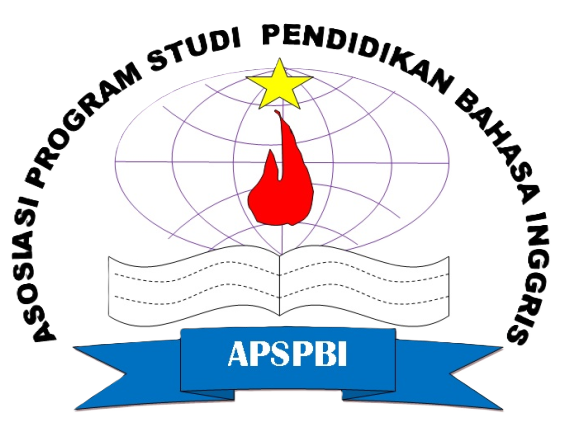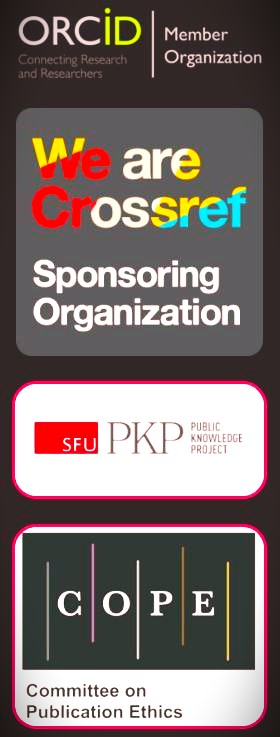INDONESIA EFL TEACHERS’ REFLECTIVE THINKING AND THEIR TEACHING STYLES: EXPLORING POTENTIAL RELATIONSHIP
DOI: https://doi.org/10.26618/exposure.v13i1.14156
Correlation, Pedagogical Practices, Professional Development, Teaching Effectiveness
Abstract
Reflective thinking is an important factor that can affect a teacher's effectiveness when teaching in the educational setting. This study aims to investigate the relationship between reflective thinking of EFL teachers in Indonesia and their teaching styles. A descriptive-correlational design was employed in the quantitative research method, and a survey with fifteen EFL teachers from different Indonesian schools was used to collect data. With a correlation of 0.757 and a significance value (sig) of 0.001<0.05, the statistical analysis's results demonstrated a strong positive or close to significant relationship between teachers' reflective thinking levels and their teaching styles. Additionally, the percentage of 53.3% indicates that EFL teachers in Indonesia tend to use the "All-round flexible, Adaptable teacher" teaching style when teaching students in English in the classroom. This finding illustrates that Indonesian EFL teachers who exhibit high levels of reflective thinking tend to have more effective teaching styles. Suggestions for future research include in-depth research to understand specific aspects of reflective thinking as it relates to teaching styles.References
Abdar, S., & Shafaei, A. (2022). The relationship between EFL teachers’ reflective thinking and their teaching style in Iranian EFL context. Reflective Practice, 23(5), 565–577. https://doi.org/10.1080/14623943.2022.2086534
Afshar, H. S., & Farahani, M. (2015). Reflective thinking and reflective teaching among Iranian EFL teachers: Do Gender and Teaching Experience Make a Difference? Procedia - Social and Behavioral Sciences, 192, 615–620. https://doi.org/10.1016/j.sbspro.2015.06.107
Akbari, R. (2007). Reflections on reflection: A critical appraisal of reflective practices in L2 teacher education. System, 35(2), 192–207. https://doi.org/10.1016/j.system.2006.12.008
Ashraf, H., Samir, A., & Yazdi, M. T. (2016). Reflective teaching practice in an EFL context: A qualitative study. International Journal of English Linguistics, 6(7), 48. https://doi.org/10.5539/ijel.v6n7p48
Ashraf, H., & Zolfaghari, S. (2018). EFL teachers’ assessment literacy and their reflective teaching. International Journal of Instruction, 11(1), 425–436. https://doi.org/10.12973/iji.2018.11129a
Brown, H. D. (2007). Principles of language learning and teaching (5th ed.). Pearson Longman.
Brown, H. D. (2014). Principles of language learning and teaching: A course in second language acquisition (6th ed.). Pearson.
Campbell, E. (2008). The ethics of teaching as a moral profession. Curriculum Inquiry, 38(4), 357–385. https://doi.org/10.1111/j.1467873X.2008.00414.x
Chee Choy, S., Abdul Rahman College, T., & San Oo, P. (2012). Reflective thinking and teaching practices: a precursor for incorporating critical thinking into the classroom? (Vol. 5, Issue 1). www.e-iji.net
Dewey, J. (1933). How we think: A restatement of the relation of reflective thinking to the educative process. MA: Heath.
Dewey John. (1993). How we think: A restatement of the relation of reflective thinking to the educative process. D. C. Heath.
Farrell, T. S. C. (2012). Reflecting on reflective practice: (Re)Visiting Dewey and Schön. TESOL Journal, 3(1), 7–16. https://doi.org/10.1002/tesj.10
Franklin, H., & Harrington, I. (2019). A Review into effective classroom management and strategies for student engagement: Teacher and student roles in today’s classrooms. Journal of Education and Training Studies, 7(12), 1. https://doi.org/10.11114/jets.v7i12.4491
Genc, E., & Ogan-Bekiroglu, F. (2004). Patterns in teaching styles of science teachers in florida and factors influencing their preferences. Florida Educational Research Association (FERA).
Gipe, J. P., & Richards, J. C. (1992). Reflective Thinking and Growth in Novices’ Teaching Abilities. The Journal of Educational Research, 86(1), 52–57. https://doi.org/10.1080/00220671.1992.9941827
Grasha, A. F. (1996). Teaching with style: A practical guide to enhancing learning by understanding teaching and learning styles. Alliance Publisher.
Grasha, A. F. (2002). The dynamics of one-on-one teaching. College Teaching, 50(4), 139–146. https://doi.org/10.1080/87567550209595895
Gulo, W. (2008). Strategi belajar mengajar. Grasindo.
Heydarnejad, T., Fatemi, A. H., & Ghonsooly, B. (2017). A Restatement of the relation of reflective thinking to the educative process. Journal of Applied. Linguistics and Language Research, 4(2), 26–46.
Kember, D., Leung, D. Y. P., Jones, A., Loke, A. Y., McKay, J., Sinclair, K., Tse, H., Webb, C., Yuet Wong, F. K., Wong, M., & Yeung, E. (2000). Development of a questionnaire to measure the level of reflective thinking. Assessment & Evaluation in Higher Education, 25(4), 381–395. https://doi.org/10.1080/713611442
Kumaravadivelu. (2006). Understanding language teaching: From method to postmethod. Lawrence Erlbaum Associates, Publishers.
Moradkhani, S., Raygan, A., & Moein, M. S. (2017). Iranian EFL teachers’ reflective practices and self-efficacy: Exploring possible relationships. System, 65, 1–14. https://doi.org/10.1016/j.system.2016.12.011
Nazir, Moh. (2013). Metode penelitian. Ghalia Indonesia.
Nurfaidah, S., Lengkanawati, N. S., & Sukyadi, D. (2017). Levels of reflection in efl pre-service teachers’ teaching journal. Indonesian Journal of Applied Linguistics, 7(1), 80–92. https://doi.org/10.17509/ijal.v7i1.6861
Orakcı, Ş. (2021). Teachers’ Reflection and level of reflective thinking on the different dimensions of their teaching practice. International Journal of Modern Education Studies, 5(1), 118–139. https://doi.org/10.51383/ijonmes.2021.88
Rahimi, M., & Asadollahi, F. (2012). On the relationship between Iranian EFL teachers’ classroom management orientations and teaching style. Procedia-Social and Behavioral Sciences, 31, 49–55. https://doi.org/10.1016/j.sbspro.2011.12.015
Rodgers, C. (2002). Defining reflection: Another look at john dewey and reflective thinking. Teachers College Record: The Voice of Scholarship in Education, 104(4), 842–866. https://doi.org/10.1111/1467-9620.00181
Safaei, N., & Shahrokhi, M. (2019). Relationship between teacher self-disclosure and teaching style: Perception of EFL teachers. Cogent Education, 6(1), 1678231. https://doi.org/10.1080/2331186X.2019.1678231
Sarwono. (2012). Pengantar statistik ekonomi Dan Sosial. Erlangga.
Schӧn, D. A. (1987). Educating the reflective practitioner: Toward a new design for teaching and learning in the professions. Jossey-Bass.
Soleimani, N. (2020). ELT teachers’ epistemological beliefs and dominant teaching style: a mixed method research. Asian-Pacific Journal of Second and Foreign Language Education, 5(12), 1–20. https://doi.org/10.1186/s40862020-00094-y
Soodmand Afshar, H., & Farahani, M. (2018). Inhibitors to EFL teachers’ reflective teaching and EFL learners’ reflective thinking and the role of teaching experience and academic degree in reflection perception. Reflective Practice, 19(1), 46–67. https://doi.org/10.1080/14623943.2017.1351353
Sugiyono. (2018). Metode penelitian kuantitatif, kualitatif dan R&D. Alfabeta.
Zhu, H. (2014). Reflective thinking on EFL classroom discourse. Journal of Language Teaching and Research, 5(6). https://doi.org/10.4304/jltr.5.6.1275-1282
Downloads
Published
How to Cite
Issue
Section
License
Authors who publish with this journal agree to the following terms:
In order to assure the highest standards for published articles, a peer review policy is applied. In pursue of the compliance with academic standards, all parties involved in the publishing process (the authors, the editors and the editorial board and the reviewers) agree to meet the responsibilities stated below in accordance to the Journal publication ethics and malpractice statement.
Duties of Authors:
- The author(s) warrant that the submitted article is an original work, which has not been previously published, and that they have obtained an agreement from any co-author(s) prior to the manuscript’s submission;
- The author(s) should not submit articles describing essentially the same research to more than one journal;
- The authors(s) make certain that the manuscript meets the terms of the Manuscript Submission Guideline regarding appropriate academic citation and that no copyright infringement occurs;
- The authors(s) should inform the editors about any conflict of interests and report any errors they subsequently, discover in their manuscript.
Duties of Editors and the Editorial Board:
- The editors, together with the editorial board, are responsible for deciding upon the publication or rejection of the submitted manuscripts based only on their originality, significance, and relevance to the domains of the journal;
- The editors evaluate the manuscripts compliance with academic criteria, the domains of the journal and the guidelines;
- The editors must at all times respect the confidentiality of any information pertaining to the submitted manuscripts;
- The editors assign the review of each manuscript to two reviewers chosen according to their domains of expertise. The editors must take into account any conflict of interest reported by the authors and the reviewers.
- The editors must ensure that the comments and recommendations of the reviewers are sent to the author(s) in due time and that the manuscripts are returned to the editors, who take the final decision to publish them or not.
Authors are permitted and encouraged to post online a pre-publication manuscript (but not the Publisher’s final formatted PDF version of the Work) in institutional repositories or on their Websites prior to and during the submission process, as it can lead to productive exchanges, as well as earlier and greater citation of published work (see The Effect of Open Access). Any such posting made before acceptance and publication of the Work shall be updated upon publication to include a reference to the Publisher-assigned DOI (Digital Object Identifier) and a link to the online abstract for the final published Work in the Journal.














